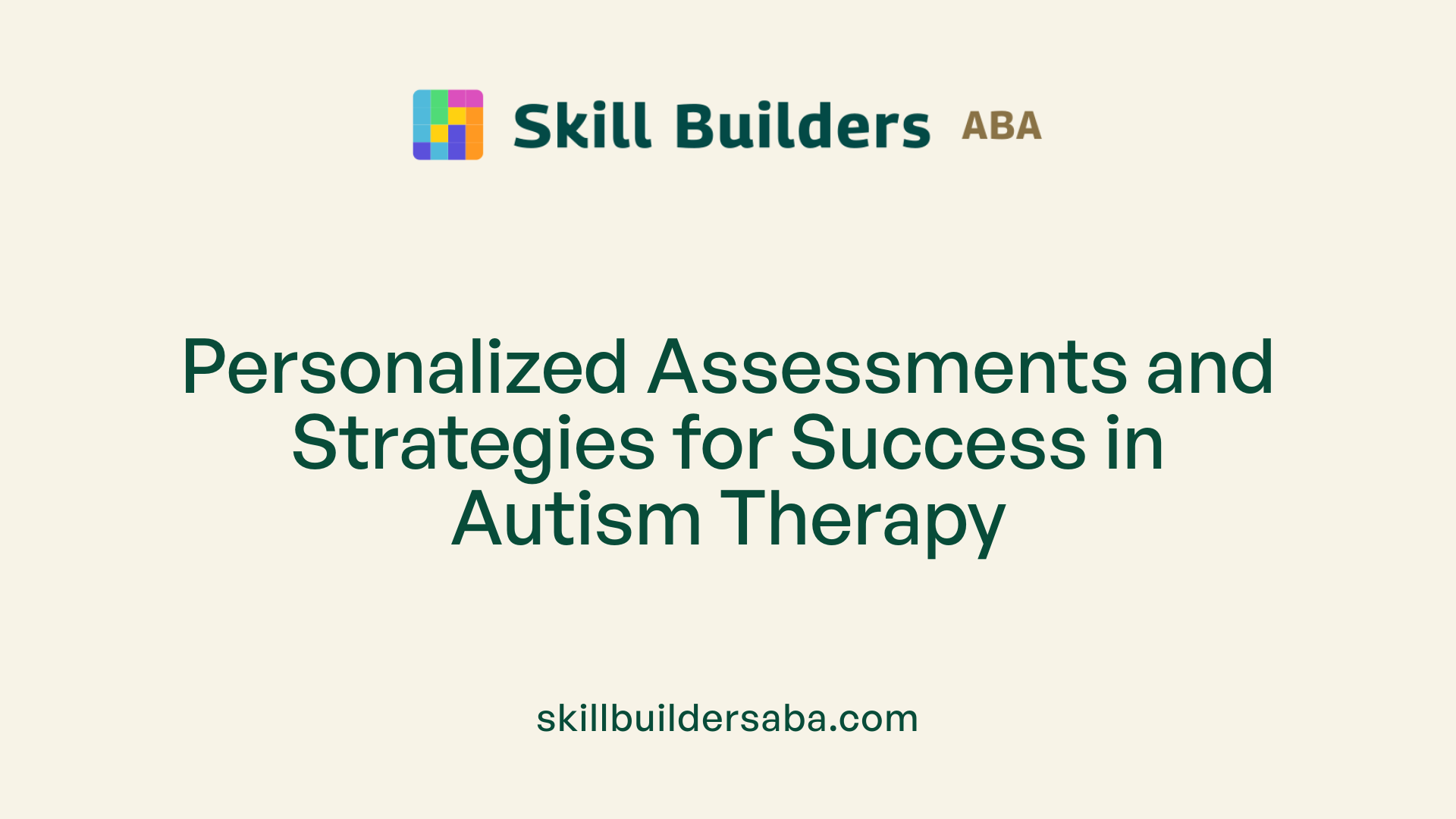
What Is Occupational Therapy For Autism?
Understanding the Need for Specialized Support in Autism Care
Introduction to Occupational Therapy in Autism Spectrum Disorder
Occupational therapy (OT) is a vital component of a comprehensive treatment plan for individuals with autism spectrum disorder (ASD). It focuses on improving core functional skills that help autistic individuals participate fully in daily life, education, work, and social activities. OT interventions are tailored to each person’s unique strengths and challenges, promoting independence and enhancing overall quality of life.
What Is Occupational Therapy for Autism and How Does It Help?

What is occupational therapy for autism and how does it help?
Occupational therapy (OT) for autism is a specialized healthcare approach aimed at helping individuals on the autism spectrum develop essential skills for daily living. This therapy focuses on improving self-care activities like dressing, bathing, and eating, as well as enhancing motor skills, social interactions, and communication.
Therapists begin with comprehensive evaluations to understand each person’s unique developmental level, sensory processing differences, and functional skills. Based on this assessment, they develop personalized treatment strategies tailored to the individual's needs.
Many interventions utilized in OT include sensory integration therapy, which helps manage sensory sensitivities, and social skills training, that teaches effective communication and interaction. Emotional regulation techniques are also employed to help individuals cope with overwhelming feelings and improve focus.
The main goal is to promote greater independence, allowing individuals to participate more fully in everyday activities like school, work, and social events. Therapists work closely with families and caregivers to support skill development and ensure that strategies are reinforced across environments.
This holistic approach not only helps improve practical skills but also boosts confidence, social participation, and overall quality of life. By tailoring interventions to each person’s strengths and challenges, occupational therapy provides meaningful support that fosters growth, engagement, and independence for individuals with autism.
Techniques and Activities Used in Occupational Therapy for Autism
 Occupational therapy for autism employs a diverse array of techniques and activities that target improving sensory, motor, social, and emotional skills. One central approach is sensory integration therapy, which helps children process sensory information more effectively. Therapists often use sensory bins filled with textured materials, swinging equipment, or deep pressure techniques like weighted blankets to help regulate the child's response to sensory stimuli, reducing overload and enhancing focus.
Occupational therapy for autism employs a diverse array of techniques and activities that target improving sensory, motor, social, and emotional skills. One central approach is sensory integration therapy, which helps children process sensory information more effectively. Therapists often use sensory bins filled with textured materials, swinging equipment, or deep pressure techniques like weighted blankets to help regulate the child's response to sensory stimuli, reducing overload and enhancing focus.
Play-based activities are fundamental in therapy, making skill development engaging. For instance, activities like making play dough can strengthen hand muscles and improve fine motor skills, while straw races or relay games encourage gross motor coordination and social interaction. These playful exercises also promote understanding of instructions and cooperation.
Visual aids and assistive technologies play a crucial role in supporting communication and emotional regulation. Tools such as emotion thermometers help children identify and communicate their feelings, fostering self-awareness. Coping skills flipbooks provide visual cues for calming strategies and problem-solving. Assistive devices like picture schedules support routine adherence, easing transitions and promoting independence.
Strategies for managing emotions and developing self-help skills are integrated into therapy sessions. Modeling desired behaviors and reinforcing positive routines help children learn self-care activities like dressing, grooming, and toileting. Techniques like social stories or visual cue cards teach appropriate social behaviors and understanding of social norms.
Together, these tailored techniques and activities aim to improve participation in daily life, enabling children on the autism spectrum to develop essential skills while fostering their confidence and independence in a supportive, engaging environment.
Supporting Daily Living and Social Skills through Occupational Therapy

How does occupational therapy support daily living skills and social interactions in autistic individuals?
Occupational therapy (OT) plays a vital role in helping autistic individuals become more independent in their daily routines and improve their ability to interact socially. Therapists evaluate how sensory processing difficulties affect behaviors and overall participation in everyday activities.
OT focuses on developing essential self-care skills, such as dressing, grooming, eating, and toileting—activities that are fundamental for independence. Through tailored strategies and targeted exercises, children learn practical ways to manage these routines confidently.
In addition to personal care, occupational therapy emphasizes enhancing social interaction and communication. Therapists utilize social stories, role-playing, peer mentoring, and social skills groups to help children understand social cues, build relationships, and participate meaningfully in group activities.
A significant part of OT involves creating sensory-friendly environments. Therapists teach coping strategies to manage sensory overload—such as using noise-canceling headphones, calming sensory activities, or visual supports—that reduce distress and behavioral challenges. Sensory diet plans, which include personalized activities throughout the day, help maintain optimal arousal levels.
Occupational therapists also incorporate sensory integration techniques to help children regulate their responses to sights, sounds, textures, and other sensory inputs. These approaches improve focus, emotional regulation, and overall participation in daily and social settings.
By supporting both practical skills and emotional regulation, occupational therapy equips autistic individuals with the tools necessary for greater independence, social participation, and quality of life. It fosters resilience, confidence, and inclusion, ultimately enabling them to thrive in their everyday environments.
Role of Occupational Therapy in Autism Assessment and Planning

What is the role of occupational therapy in autism assessment and intervention planning?
Occupational therapy is a crucial component in assessing and planning effective interventions for children and adults with autism spectrum disorder (ASD). The process begins with comprehensive evaluations that examine sensory processing differences, motor skills, daily living abilities, and social interactions.
Therapists use specialized tools, such as the Sensory Profile-2 and Vineland Adaptive Behavior Scales, to gather detailed information about an individual’s strengths and challenges. This assessment helps identify areas needing support, including sensory sensitivities, motor coordination issues, self-care routines, and emotional regulation.
Based on assessment results, occupational therapists develop personalized strategies focused on improving daily functioning. These strategies may include sensory diets—customized activity plans that incorporate sensory input throughout the day to regulate arousal levels—and sensory circuits, which are short activity sequences designed to prepare children for effective engagement in learning.
Interventions aim to reduce sensory overload, manage hypersensitivity or hyposensitivity, and foster emotional stability. They also include developing fine and gross motor skills, enhancing social participation, and supporting communication. By addressing these specific needs, occupational therapy helps individuals with autism achieve greater independence and improve their overall quality of life.
Occupational therapists operate within a holistic framework, considering physical, emotional, and environmental influences on development. They utilize models like the Person–Environment–Occupation (PEO) to understand how interactions among the individual, their surroundings, and their daily activities affect participation.
The PEO model emphasizes tailoring activities and environments to facilitate optimal participation, making therapy more relevant and effective. Overall, the assessments and customized interventions provided by occupational therapists are essential for promoting development, building skills, and supporting individuals to lead more independent and fulfilling lives within a multidisciplinary team.
Guidance for Finding and Choosing Occupational Therapy Providers
How can I find appropriate occupational therapy providers for autism?
Finding the right occupational therapy (OT) provider for a child with autism involves a few important steps. Start by asking your child's primary healthcare provider or pediatrician for referrals. Autism support organizations, local hospitals, or community health clinics can also be good sources of recommendations.
Utilize reputable online directories to identify qualified therapists. The American Occupational Therapy Association (AOTA) offers an Approved Providers Program, which lists licensed OT practitioners with experience in autism. Another helpful resource is Autism Speaks' Resource Guide, which provides information about local and national service providers.
In addition, organizations such as Autism Services, Inc., specialize in autism-related therapies and can connect you with experienced, licensed occupational therapists in your area.
When evaluating potential providers, consider their training and experience specifically related to autism spectrum disorder. Ask if they have certifications or ongoing training in sensory integration, behavioral strategies, and other autism-specific interventions. Ensuring that the therapist has a background in working with children on the spectrum can make a significant difference in the effectiveness of therapy.
It’s also important to consider the provider’s approach and compatibility with your child's needs. Meeting with the therapist beforehand or reviewing their philosophy can help you determine whether their style aligns with your family’s goals. Choosing a provider who is experienced, qualified, and engaging for your child is a vital step towards successful occupational therapy.
Bringing It All Together for Better Outcomes
Occupational therapy is a cornerstone in supporting individuals with autism spectrum disorder. Through personalized assessments and tailored interventions, OT addresses sensory challenges, motor delays, and social deficits—paving the way for better independence and quality of life. Choosing the right provider and understanding what to expect can make a significant difference in the effectiveness of therapy. Overall, occupational therapy offers a holistic, client-centered approach that helps autistic individuals reach their full potential and actively participate in their communities.
References
- Occupational therapy | Autism Speaks
- Why is occupational therapy important for autistic children?
- How Occupational Therapy Can Help Children with Autism
- Occupational Therapy for Autism: What to Expect | Dementech
- The role of Occupational Therapy in Autism | Ability Action Australia
- Autism and Mental Health: The Role of Occupational Therapy
- Occupational Therapy and How Can it Help My Autistic Child - Cortica
- Occupational Therapy | Autism Early Support
- Benefits of Occupational Therapy for Autism
Reach Out Today
Learn more about how we can support your child’s growth and development. Contact us to discuss our services and availability in your area.
.svg)